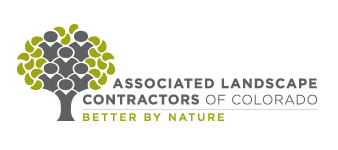|
Pest and Weed Management Even with native and other well-adapted plants in our landscapes, it is still an ongoing challenge to keep trees and other plants thriving in Colorado. High elevation, intense sunlight, often poor soil conditions and the semi-arid climate with temperatures that can change dramatically all combine to stress plants on a year-round basis. To keep our plants thriving in spite of these factors requires ongoing and proper care that is driven by scientific research and knowledge. Plants that are stressed through environmental or other factors lack the defenses to keep insects and diseases at bay. When pests take hold and reproduce, they are capable of killing trees and other plants and seriously eroding the quality of our landscapes. Our landscapes cannot thrive without proper care that sometimes includes treatments for weeds, pests and diseases. ALCC has helped author several resources on this topic. As avid outdoor enthusiasts, Coloradans want to play, exercise and picnic outdoors nearly 300 days a year. We have come to expect environments free of rats and mice, fire ants and wasps, mosquitoes and bed bugs. Likewise, we expect diverse, well-cared-for trees and shrubs in healthy landscapes. Pests (weeds, insects, mites, fungus) are a given in any environment. Industry professionals can help you make the most appropriate and responsible environmental choices. Members may download the resources in the pest and weed management toolkit. Emerald Ash BorerEmerald Ash Borer (EAB) was found in Boulder, CO, in September 2013. As a non-native insect, EAB lacks predators and attacks ash trees. The pest is responsible for the death of millions of ash trees in the Midwestern U.S. Effective November 2013, an emergency quarantine was issued to protect Colorado ash trees. About 15 percent of trees in the urban forests of Colorado are ash, according to the Department of Agriculture. Denver Metro has 1.45 million ash trees. To date, there has been no identification of EAB outside Boulder. The EAB moves short distances by itself, but the spread is facilitated by the movement of infested nursery stock, untreated firewood and wood products. If you live in or close to an area that has EAB, planting ash trees is risky and not recommended. If you have ash trees on your property, here are some tips on how to protect your trees:
Here are some helpful resources: |


